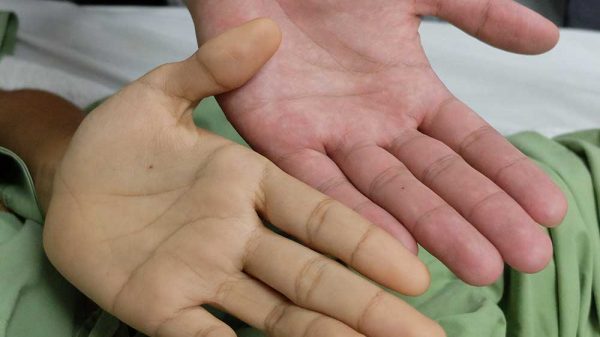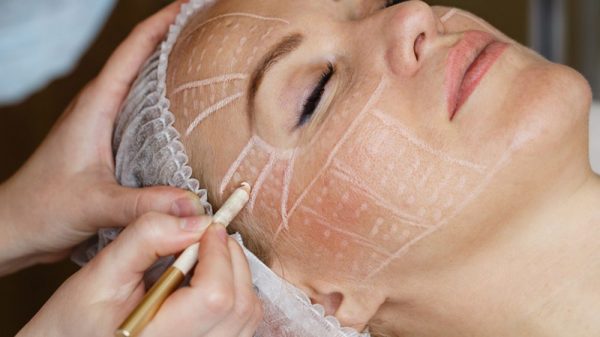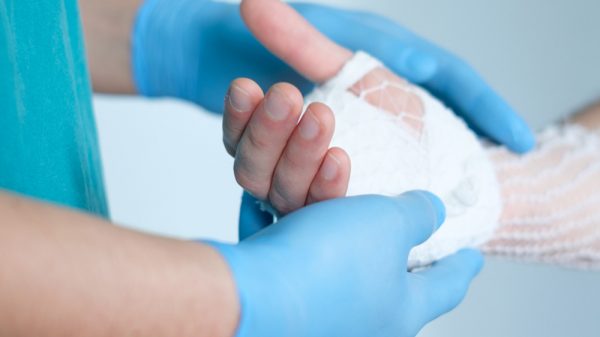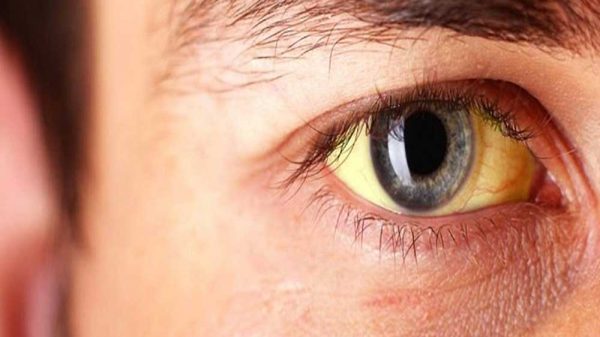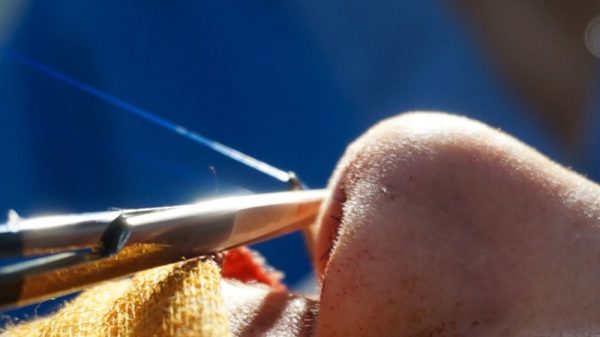Tendonitis is a common ailment that can render a limb useless while it heals. Generally, treating tendonitis does not require surgery, and can usually be taken care of with home remedies. Here we answer the questions you might have about what it means to have tendonitis, how to treat tendonitis effectively, and how to prevent it in the future.
What Is Tendonitis?
Tendonitis – also referred to as tendinitis – is an inflammatory condition in your tendons. When you have tendonitis, this means that one of your tendons is inflamed. A tendon is a type of connective tissue present throughout the body, particularly the arms and legs, and is responsible for attaching muscles to bones. As the name describes, tendons are designed to be resilient to tension, and movement exerts a natural pull between muscle and bones. To remain resistant to tension, tendons are made of strong, stretchy connective tissue called collagen.
Tendonitis is a form of strain injury resulting from repetitive use. When you perform a repetitive movement, tension and pressure is continuously exerted on the same area of your body. Overuse can lead to irritation and inflammation in the tendon.
What Types of Activity Cause Tendonitis?
Nearly any repetitive movements can result in tendonitis. Often, tendonitis is associated with sports injuries, but it can also be associated with other activities that involve repetitive motions. Common types of tendonitis include:
- Tennis elbow: Also called lateral epicondylitis, tennis elbow results in inflammation of tendons on the outer part of the elbow. If you are experiencing a tennis elbow, you may feel pain in the outside elbow and outer forearm and have difficulty with grip strength. Tennis players aren’t the only people susceptible to tennis elbow. Carpenters, plumbers, butchers, and racquetball players commonly develop this form of tendonitis. Guitar players are also susceptible to tennis elbow.
- Golfer’s elbow: Golfer’s elbow is medically known as medial epicondylitis and affects the inner part of the elbow. If you have golfer’s elbow, you will likely feel weak in your wrist and fingers and have difficulty gripping. Golfer’s elbow is also referred to as pitcher’s elbow since baseball pitchers often develop this form of tendonitis with repetitive throwing motions. Climbers and individuals who perpetually use grip strength are at a higher risk of developing medial epicondylitis.
- Achilles tendonitis: We often hear about injuries to the Achilles tendon in the sports world. The Achilles tendon an extremely strong tendon and can be found at the back of your heel. Achilles tendonitis can either be non-insertional or insertional, depending on the location of the inflammation. Non-insertional tendonitis affects the middle of the Achilles tendon, while insertional tendonitis affects the part of the Achilles tendon that joins to the heel. The Achilles tendon absorbs tension from a variety of movements, particularly activities that involve running and sprinting.
- Jumper’s knee: Jumper’s knee is medically referred to as patellar tendonitis and affects the tendon that joins to the kneecap. If you have jumper’s knee, you will feel pain and stiffness in the front of the knee when walking, jumping, or engaging in other activities that require bending the knee. Jumper’s knee is common among athletes who play volleyball and basketball.
- Peroneal tendonitis: Peroneal tendonitis is a type of tendonitis in the foot. Peroneal tendons support and stabilize the foot during physical activity. Each foot contains two peroneal tendons, one on the bottom of the foot and one on the outside. Because of the particular location of these tendons, they are prone to rubbing against bone during physical activity. If you have peroneal tendonitis, you will feel pain around the ankle when walking or running.
- Shoulder tendonitis: Tendonitis in shoulder tendons affects either the biceps tendon or the rotator cuff. Repetitive overhead throwing motions result in chafing tendons against bone, which increases the risk of developing shoulder tendonitis. Shoulder tendonitis is commonly seen among tennis players, baseball players, and volleyball players.
Tendon inflammation can occur in any part of the body that has a tendon been subjected to overuse. Remember that tendonitis is not restricted to athletes. Anyone who exercises regularly or completes a repetitive movement may be vulnerable to developing tendonitis. Pianists, drummers, guitarists, and carpenters who use lots of hand tools may also be prone to tendonitis in wrist tendons.
Symptoms of Tendonitis
How do you know if the pain you are experiencing indicates tendonitis? Symptoms may come on suddenly, or they may gradually worsen over time. Generally, symptoms of tendonitis may include:
- Tenderness or aching around a joint
- Limited range of motion
- Stiffness
- Tingling in the affected limb
When to See a Doctor
You should visit a healthcare provider for tendonitis if you don’t notice an improvement in your symptoms after a few days of following the at-home remedies.
You should also visit a physician if your symptoms are severe, or if you’re not sure if you have tendonitis. The symptoms of tendonitis can often be confused with symptoms that accompany other conditions. Your doctor can help assess your injury and determine if you indeed have tendonitis, or if you have another type of tendon injury, ligament injury, soft tissue injury, bursitis, or rheumatoid arthritis.
A physician is able to diagnose tendonitis after a physical exam and assessment of your symptoms. If deemed necessary, your doctor may order x rays of the affected area to make sure you don’t have another injury.
If you have an acute episode of tendonitis, there are treatment options if your injury isn’t responsive to at-home treatments. Your physician may administer corticosteroid injections into the affected area. Cortisone is a powerful anti-inflammatory medication that can help reduce swelling and irritation, which can help expedite healing while providing significant pain relief. Though used less often, platelet-rich plasma (PRP) treatment is another therapeutic method for soothing inflammation and promoting faster healing in the inflamed tendon.
If you are partaking in rigorous physical activity, it’s a good idea to visit a sports medicine specialist who can provide guidance for safely participating in your sport.
It is critical to receive proper treatment for tendonitis. If left untreated and unresolved, tendonitis can become tendonosis, also called tendinosis or tendinopathy. Tendinosis describes a condition of chronic tendonitis that takes much longer to heal than tendonitis. Symptoms may also be more severe and significantly impact your ability to move around the affected joint. Eventually, untreated tendinosis can lead to permanent tendon degeneration and damage that requires more involved treatment and surgery to overcome. Always follow medical advice to best support the repair of an inflamed tendon.
How to Support Healing from Tendonitis at Home
There are several steps you can take at home to heal an episode of tendonitis. Home remedies – including nutrition, pain medications, and rest – can alleviate your tendonitis.
1. Rest
Resting is the #1 most important thing you can do for your inflamed tendon. Repeated use will serve to worsen tendonitis and render all other remedies ineffective. When you allow the injured area to rest, your cells and immune system can channel energy and resources towards repairing damaged and inflamed tissue. Continued use will re-injure the affected area, elongating healing times.
2. Hot and Cold Compresses
Alternating hot and cold wraps can support your tendon as it heals. Hot compresses allow tissues to become more flexible, loosening them and allowing for more healing. Cold compresses soothe inflammation and provide pain relief. It’s important to use compresses or wraps that decrease swelling and allow for your body to heal the inflamed tendon.
3. Ice
In addition to cold compresses, icing the injured area is also helpful for reducing swelling and inflammation. Apply ice packs or bags of ice cubes to the injured area for at least 20 minutes at a time throughout the day.
4. Anti-Inflammatory Medication
Over-the-counter medications can be very helpful for fighting tendonitis and providing pain relief. Nonsteroidal anti-inflammatory drugs like ibuprofen and naproxen specifically help lower your body’s inflammatory response while relieving pain. Acetaminophen, though not effective in reducing inflammation, can be helpful for controlling pain.
5. Balanced Nutrition
Eating healthfully and getting a balance of nutrients is important for supporting your immune system and expediting repair for the injured area. Following an anti-inflammatory diet, in particular, can help reduce swelling and cut down on your recovery time.
The cornerstones of an anti-inflammatory diet include:
- Eating lots of whole grains and legumes: Whole grains and legumes provide fiber, protein, and minerals that support growth and repair. When recovering from tendonitis, eat foods like quinoa, brown rice, millet, whole wheat, lentils, chickpeas, and black beans.
- Eating your fruits and veggies: Fruits and veggies are packed with vitamins and minerals that support healing from a tendon injury. Polyphenols and carotenoids are other micronutrients that are found in abundance in fruits and vegetables. Polyphenols and carotenoids exhibit potent anti-inflammatory and antioxidant activity that helps cells divide and repair efficiently while clearing cellular waste.
- Consuming high-quality protein: Protein is crucial for immune function, muscle growth, and connective tissue repair. Get high-quality protein from nonfat yogurt, low-fat cheese, skim milk, fatty fish, and lean meats like chicken and turkey. Soybean products like tofu and combinations of other plant sources from whole grains, nuts, and seeds provide lots of protein as well.
- Cutting out sugars and refined starches: Both added sugars and refined starches are converted to glucose molecules in the digestive tract, where they enter the blood and spike your blood sugar. Over time, foods with added sugar and refined starches can lead to weight gain, insulin resistance, and fatty liver disease, while also contributing to systemic inflammation. Inflammation worsens swelling in injured areas and slows healing time. Avoid white bread, white pasta, sugary breakfast cereals, white rice, candy, soda, candy, cookies, and other baked goods.
Additionally, specific nutrients support connective tissue repair and immune function.
- Vitamin C: We are familiar with vitamin C as a nutrient that helps us ward of colds and viral infections. However, vitamin C is also vital in supporting the growth of collagen and connective tissues. Eating foods rich in vitamin C may help the body heal from tendonitis. To boost the amount of vitamin C in your diet, eat plenty of sweet potatoes, red pepper, oranges, tomatoes, kale, kiwi, and cauliflower.
- Vitamin D: Vitamin D is critical for supporting the immune system, lowering systemic inflammation, and supporting bone health and muscle growth. Experts estimate that a significant portion of the population has insufficient vitamin D levels for optimal function. Very few foods naturally contain sufficiently high levels of vitamin D, with the exception of fish like mackerel and salmon. To get more vitamin D, get about 15 minutes of sunlight per day or add a supplement to your diet.
- Essential amino acids: Amino acids are the tiniest individual units of protein that are utilized by the body. Biological processes require a daily intake of essential amino acids in optimal ratios, in order to function most effectively. When recovering from injuries like tendonitis, the body requires even more essential amino acids to promote a full and speedy recovery. In fact, certain amino acids such as leucine are particularly critical for connective tissue repair. Plus, if you’re an athlete and required to rest, essential amino acids help prevent loss of lean muscle mass during the rest period. You can find ideal ratios of essential amino acids in animal proteins, such as milk, yogurt, whey protein, and meat. When choosing animal sources for protein, always go for low-fat options. Alternatively, combining plant proteins or taking an essential amino acid supplement can ensure you’re getting the amino acids you need to support muscle growth and tendon repair.
6. Bandaging and Bracing
Bandaging or bracing the affected joint can help protect your tendon from any excess strain or tension, allowing it to repair properly. Even when you return to regular exercise, wearing an appropriate brace may absorb shock and protect tendons from injury.
7. Gentle Exercises and Physical Therapy
Although rest is critical for reversing overuse injuries, too much rest can contribute to the stiffness that impedes healing. After an initial period of rest, begin to incorporate gentle stretching and exercises into your routine. This serves to warm up the tendons and support them as they gradually regain strength. If you participate in rigorous physical activity or you are a professional athlete, physical therapy will be a helpful option for reaching a full and speedy recovery.
8. Elevation
If you have tendonitis that affects the lower portion of the body, such as jumper’s knee or Achilles tendonitis, swelling worsens as gravity pulls blood towards the lower part of the body while you’re standing. As much as possible, rest with your knee and foot raised above the heart by propping them up with pillows. Elevating the injured area will decrease swelling, reduce inflammation, and promote faster healing.
Preventing Tendonitis
After you’ve recovered from an episode of tendonitis, it’s important to take the necessary steps to prevent future cases of tendonitis. The last thing you want is to endure repetitive injury to the same tendon, eventually leading to and an inability to partake in your favorite activities and sports. Or worse, repetitive injury can significantly your ability to carry out daily activities and affect your quality of life.
Thankfully, there are steps you can take to help prevent future cases of tendonitis.
1. Incorporate Stretching into Your Routine
Increasing your flexibility is vital for preventing the worsening and reoccurrence of tendonitis. Before working out, make a habit of engaging in dynamic and static stretches. Stretching your tendons and muscles allows them to withstand increases in tension without sustaining injuries and inflammation. Different stretches are helpful for preventing different cases of tendonitis.
For example, if you are a runner who’s prone to peroneal tendonitis, it’s important to stretch the muscles in your calf and foot. Before running, spend several minutes focusing on the peroneal tendons. Stand with your toes on a step and allow your weight to drop into your heel. You will feel your muscles stretching in the back of your calf, ankle, and bottom of your foot. You can stretch both feet simultaneously, or alternate feet standing on the step. Then, sit on the ground with one leg outstretched, and wrap a band or strap around the top of your foot. Holding the band in each hand, gently pull back until you feel a stretch in the bottom of your foot and calf. Then alternate feet.
A physical therapist can guide you on the best stretching techniques for the kind of activity you do and your form of tendonitis.
2. Build Up Muscle Strength
Muscles work in concert with tendons and bone to support physical activity. Tendons are surrounded by and supported by muscle. Building up more strength allows your muscles to absorb some tension, which takes the pressure off of your tendons and decreases the risk of tendon injury. Plus, increased muscle mass supports healthy joints and decreases the risk of joint injury as well. To increase lean muscle mass, engage in regular strength training and eat a diet rich in protein and essential amino acids.
3. Use Proper Equipment
Regardless of the sport or physical activity you participate in, using the right equipment is a significant factor in preventing tendonitis.
- Lightweight equipment: Using lighter equipment takes the strain off of your tendons and joints. If you’re using a heavy golf club or tennis racquet, your tendons must sustain the pressure of your exertion with added weight. Swapping out heavy equipment for lighter equipment can make a big difference in tendonitis prevention.
- Fitted equipment: Your body may need to be unnaturally contorting when using ill-fitting equipment, which places extra strain on tendons and joints. When equipment fits your size and style. For example, it’s important that golf clubs are at an appropriate height, tennis racquets fit your grip, and violins and guitars are properly sized. If you’re a runner, make sure that your shoes are fitted for your posture and foot shape to avoid inflammation and injury. For expert advice, talk to an equipment expert who can evaluate your size and structure, and advise the best equipment for you to minimize the risk of injury.
4. Streamline and Perfect Your Form
When engaging in physical activity or repetitive motion of any kind, proper form is crucial for reducing the strain and tension that the tendons endure. For example, if you’re a runner who tends to hit the pavement with your heel, it may be beneficial to land your strides on the forefoot to minimize strain on the Achilles tendon. If you’re a pianist, it’s critical to keep your fingers curved and your wrist raised above the fingers to prevent hand fatigue and tendonitis.
5. Maintain a Healthy Diet
Your risk of sustaining any kind of injury increases when you eat inflammatory foods, are overweight, or have underlying diet-related conditions like type 2 diabetes and fatty liver disease. To help your body maintain resilience to tendonitis, eat a diet rich in whole foods that afford healthy fats, complex carbohydrates, essential amino acids, vitamins, minerals, and antioxidants. Maintaining a healthy body weight, limiting alcohol intake, and avoiding smoking are also vital lifestyle factors that help prevent tendonitis.
6. Gradually Ramp Up Physical Activity
A drastic increase in exercise can be a shock to your system and place lots of strain on your tendons. Gradually increasing your physical activity over time allows your body to adjust to increased strain and tension, decreasing the likelihood of injury and inflammation.
How to Treat Tendonitis: Conclusion
Tendonitis refers to the inflammation of tendons, which are connective tissues that attach muscles to bones. Luckily, when treated early, tendonitis can be reversed to prevent further serious injuries and complications. Rest, hot and cold compresses, anti-inflammatory medication, and proper nutrition support a full recovery.

